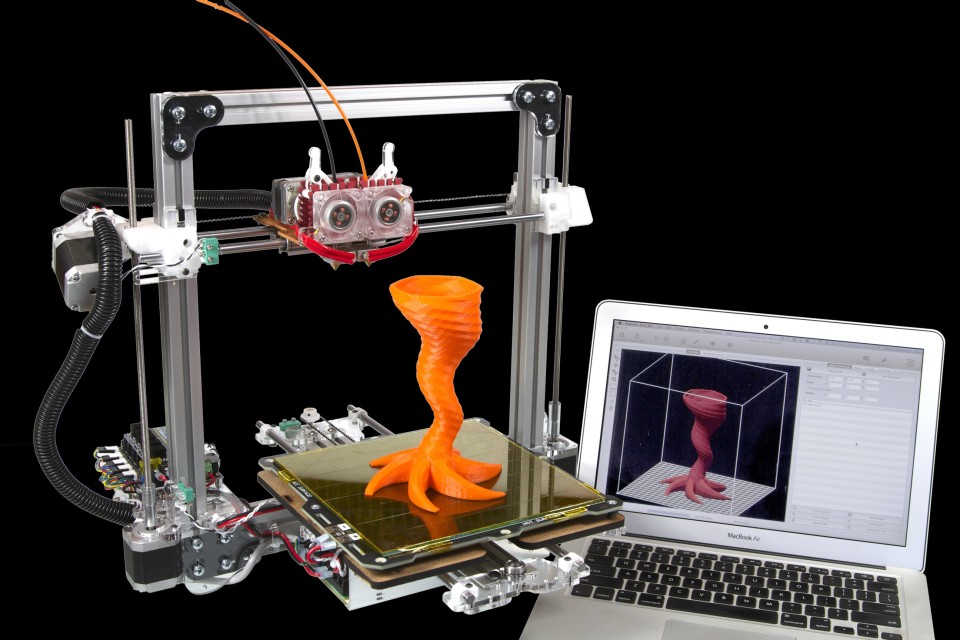What is 3D printing?
3D printing begins with a 3D (three dimensional) electronic file of an object. This file can be created using Computer Aided Design (CAD) software such as SolidWorks, for example. One may also use a scanner to create an electronic 3D file from a physical model. A scanner has a light source and a light detector, and other electronics and software that interprets what it sees into a virtual 3D file.
A 3D printer takes this electronic file and builds a 3-dimensional item matching this file. The model is built up one very thin layer at a time. Typically, the models will be in 1, 2, or even 3 colors. But there is work being done to produce in full color.
Many print with plastics. ABS is strong but more difficult to work, and PLA is easier to work but not as strong. Another common material is UV-curable resin. Some printers are available that create models out of a wax-like material, which can then be used for investment casting of jewelry or other metal parts. Paper is another material used by some printers.
3D printing exists for metals too. Metal additive manufacturing is typically used for commercial or industrial applications. I expect to see this technology next month at the MD&M West show in Anaheim, California.
My next post will cover some of the 3D printer highlights from the CES show earlier this month.

One thought on “3D Printing Overview”
Comments are closed.